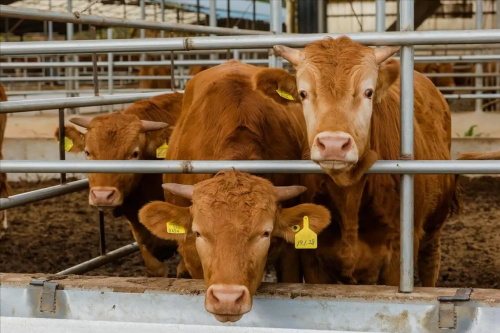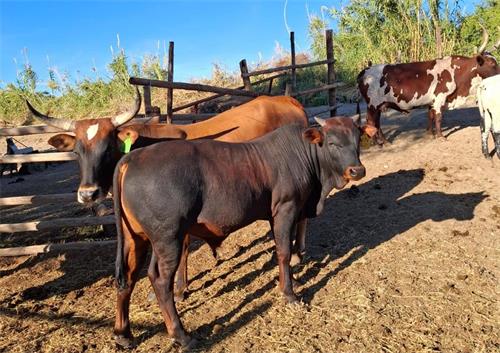As a livestock farmer or farm manager, adopting advanced technologies to monitor and improve animal health and productivity is essential. Among the most transformative tools in modern animal husbandry is ultrasound equipment. This technology offers a non-invasive, real-time window into the internal conditions of animals, helping optimize reproduction, growth monitoring, and overall herd management.

In recent years, ultrasound devices such as the portable and rugged BXL-V50 veterinary ultrasound scanner have made this technology more accessible, allowing farmers to perform critical diagnostics directly on the farm. Understanding the practical applications, benefits, and proper use of ultrasound equipment can dramatically improve decision-making, leading to healthier animals and increased profitability.
Understanding Ultrasound Technology in Livestock Farming
Ultrasound imaging uses high-frequency sound waves to produce images of internal tissues and organs. Unlike X-rays or other radiographic techniques, ultrasound is safe, painless, and free of radiation, making it ideal for repeated use in animal management.
The core advantages of ultrasound on farms include:
Non-invasive examination: No discomfort or stress is caused to the animal.
Real-time imaging: Allows immediate evaluation and adjustments.
Portability: Modern devices, like the BXL-V50, are lightweight, waterproof, and battery-operated, making field use practical.
Versatility: Applicable to many species—cattle, pigs, sheep, goats, horses, and even companion animals.
The ability to visualize reproductive organs, muscle development, fat layers, and even fetal health provides farmers with actionable insights that were previously unavailable or required expensive laboratory tests.
Key Applications of Ultrasound on Farms
1. Reproductive Management and Pregnancy Diagnosis
One of the earliest and most widespread uses of ultrasound in livestock is pregnancy diagnosis. Timely and accurate pregnancy detection allows farmers to manage breeding programs efficiently, optimize feed allocation, and reduce unproductive days.
Using ultrasound equipment such as the BXL-V50, a veterinarian or trained technician can scan the uterus transrectally or transabdominally, depending on the species and size, as early as 25-30 days post-breeding in cattle, and somewhat earlier in smaller species like sheep and goats.
Early detection also helps identify reproductive problems like ovarian cysts, uterine infections, or abnormal pregnancies, enabling prompt veterinary intervention. For instance, in swine production, ultrasound helps detect non-pregnant sows early in the cycle, allowing faster return to estrus and improved herd fertility.
2. Growth and Body Composition Monitoring
In meat production animals such as beef cattle, sheep, and pigs, ultrasound provides an accurate method to assess muscle growth and fat deposition without slaughtering the animal. Measurements such as backfat thickness, loin eye muscle area, and marbling scores are key indicators of carcass quality and optimal marketing time.
The BXL-V50 ultrasound scanner, with its high-definition imaging and user-friendly interface, facilitates on-farm evaluation of these parameters. This helps farmers decide when animals are ready for finishing or market, improving feed efficiency and carcass uniformity.
3. Health Assessment and Disease Detection
Ultrasound is invaluable for diagnosing internal health issues like abscesses, organ abnormalities, or fluid accumulations in body cavities. In dairy cattle, for example, ultrasound can help detect uterine infections postpartum, allowing early treatment to prevent infertility.
In equine practice, ultrasound evaluates tendons and ligaments for injuries, aiding in rehabilitation planning.
4. Assisted Reproductive Techniques (ART)
Advanced breeding techniques such as artificial insemination, embryo transfer, and ovum pick-up rely heavily on ultrasound guidance. Precise visualization of ovarian follicles and reproductive tract structures maximizes success rates in ART programs.

Practical Considerations for Ultrasound Use on the Farm
Operator Training and Experience
While ultrasound technology is user-friendly, accurate interpretation requires training and practice. Misinterpretation can lead to wrong decisions impacting animal welfare and farm economics. Many veterinary schools and industry organizations offer courses on veterinary ultrasonography, and continuous learning is recommended.
Equipment Selection: Why BXL-V50?
Choosing the right ultrasound equipment is critical. The BXL-V50 veterinary ultrasound scanner stands out as a versatile, durable option designed specifically for farm conditions:
Waterproof and dustproof (IP56 rating), essential for harsh environments.
Long-lasting battery life (over 7 hours), allowing full-day use in the field.
8-inch HD screen with high resolution, providing clear images for precise diagnostics.
Multiple probe compatibility for different scanning needs (e.g., linear and convex probes).
User-friendly interface tailored for quick operation by veterinarians and farm technicians.
These features minimize downtime and maximize diagnostic accuracy, making the BXL-V50 a reliable partner for daily farm operations.
Maintenance and Calibration
Proper maintenance of ultrasound equipment ensures consistent image quality and device longevity. Regular cleaning of probes, software updates, and calibration checks are necessary steps. Keeping devices charged and storing them safely protects the investment.
Data Management and Integration
Modern ultrasound machines often allow image storage and transfer, enabling data tracking over time. Integrating ultrasound data with farm management software can help analyze trends in reproduction, growth, and health for continuous improvement.
Case Study: Using Ultrasound to Optimize Beef Cattle Growth
In beef production, ultrasound monitoring of muscle and fat development has become standard practice among progressive producers.
After birth, calves undergo several growth phases before slaughter. Using ultrasound, farmers can monitor the longissimus dorsi muscle (loin eye muscle) area and subcutaneous fat thickness to:
Identify animals with superior growth potential early.
Adjust feed rations to optimize lean tissue growth versus fat deposition.
Decide the optimal time for finishing and slaughter to maximize carcass quality and economic return.
This data-driven approach reduces guesswork and feed wastage, improving both sustainability and profitability.Future Trends in Farm Ultrasound Technology
Emerging technologies promise to expand the role of ultrasound in farming:
Artificial intelligence (AI): Software that assists image interpretation to reduce operator error.
Wireless probes: Allowing more freedom of movement during scanning.
3D and Doppler imaging: Providing more detailed tissue and blood flow information.
Integration with wearable sensors: For comprehensive health monitoring.
Farmers who adopt these advances early will gain competitive advantages in productivity and animal welfare.Conclusion
Ultrasound equipment is revolutionizing livestock farming by enabling precise, non-invasive monitoring of animal health, reproduction, and growth. Devices like the BXL-V50 veterinary ultrasound scanner exemplify how modern technology can be rugged, accessible, and effective in field conditions.
By integrating ultrasound diagnostics into routine farm management, producers can make informed decisions that enhance productivity, improve animal welfare, and increase profitability. As the technology continues to evolve, its role on farms will only expand, becoming an indispensable tool for the modern livestock professional.
References
Whitaker, D. A., & Smith, E. (2021). Veterinary Ultrasonography in Food-Producing Animals. Journal of Veterinary Imaging.
Beef Cattle Institute. (2023). “Use of Ultrasound for Growth Evaluation in Cattle.” https://www.beefcattleinstitute.org/ultrasound-growth
Boerboom, D. M. (2017). Ultrasonography in Bovine Reproductive Management. Veterinary Clinics of North America: Food Animal Practice, 33(3), 439-458.
Riggs, P. K., & Anderson, D. E. (2018). Use of Ultrasound in Swine Reproductive Management. Swine Health and Production, 26(5), 274-282.
BXL Vet. (2024). BXL-V50 Veterinary Ultrasound Scanner Product Brochure. https://www.bxl-vet.com/bxl-v50
tags:
Text link:https://www.bxlultrasound.com/ns/852.html


